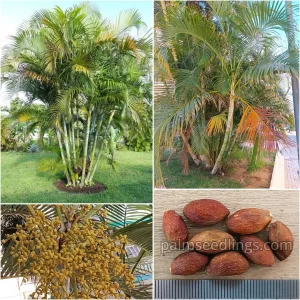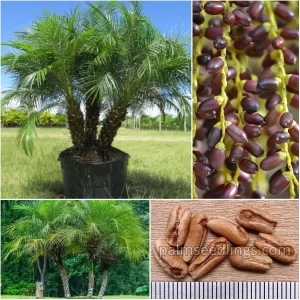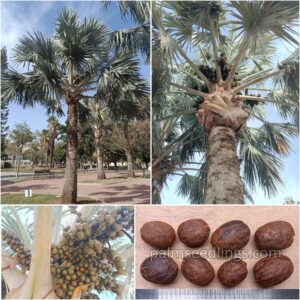Menu
4,00 € – 80,00 €
Product Details
Sabal bermudana is a robust palm with a thick trunk, blue-green fan-shaped leaves, and clusters of small, dark fruits.
-Germination Time: Medium
-Germination Difficulty: Easy
-Growth speed: Medium
-Cold Hardiness: -9°C (16°F)
Select Quantity
*Shipping cost is calculated automatically in the cart after adding the products.
Sabal bermudana, commonly known as the Bermuda palmetto, is a medium-sized palm that typically reaches heights of 7–15 meters (23–50 feet). It has a stout, smooth, gray trunk and a dense crown of large, fan-shaped fronds that are bluish-green and can grow up to 1.5 meters (5 feet) wide. The fronds have a costapalmate structure, giving them a slightly curved appearance. It produces small, white flowers in branched inflorescences, followed by black, round fruits.
Endemic to Bermuda, the Bermuda palmetto thrives in sandy, well-drained soils and is highly tolerant of salt and wind, making it ideal for coastal areas. It is moderately drought-tolerant and can survive cold temperatures as low as -9°C (16°F). This palm is a symbol of Bermuda’s natural heritage and is used in landscaping for its hardiness and distinctive beauty
| Weight | N/A |
|---|---|
| Quantity | 10 Seeds, 100 Seeds, 500 Seeds, 1.000 Seeds, 4.000 Seeds |




All rights reserved PalmseedlingsⓇ 2025.